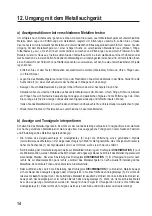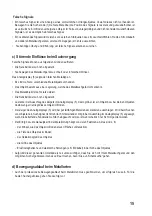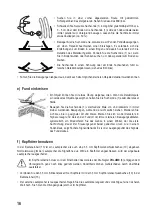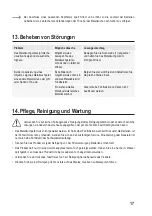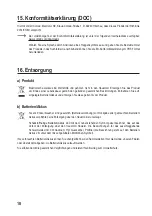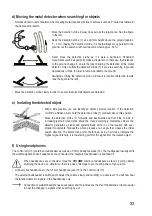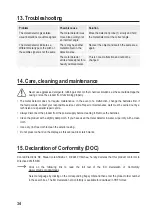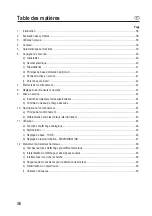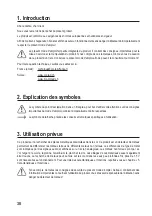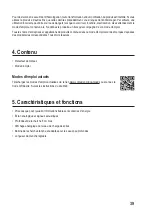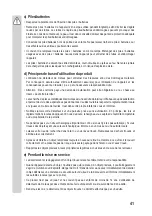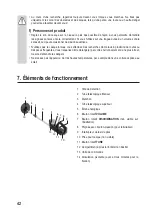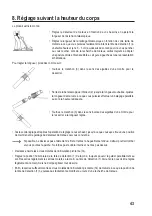
28
b) Checking the battery status
You can check the battery status. We recommend checking the battery status before each use. To check the battery
status, proceed as follows:
• Turn the VOLUME dial (6) to switch the metal detector on.
• Slide the battery test switch (9) to the “BATT TEST” position to test the battery status.
• The pointer on the analogue display (5) indicates the battery status. If the pointer is in the green area with name
“BATT”, the battery status is OK. If the pointer comes to rest outside of the green area (3 - 6), the battery status is
no longer adequate. In that case, the batteries must be replaced.
• Slide the battery test switch (9) to the “OPERATE” position again to return to search mode. In this position, you can
begin metal detection.
Test the battery status in the event of a malfunction or no response from the metal detector, e.g. if the metal
detector doesn’t switch on, if you can’t adjust the settings, if the volume is too low or if the metal detector
doesn’t respond properly.
10. Description of functions
a) Operating principle
This product works with the VLF method (low-frequency method). A metal detector of this type consists of a transmitter
coil, a receiver coil and switching circuits with microprocessor, which processes the signals. The outer coil in the
detection probe is the transmitter. An alternating current with a frequency of 20 kHz is sent through this coil. This
creates a magnetic field, whose direction along the vertical axis is aligned to the ground. This magnetic field induces a
current into metallic objects hidden in the ground. In turn, this creates a magnetic field in the receiver coil opposed to
the inducing magnetic field. This is located inside the transmitter coil. Owing to the inductance, inducing and induced
current flow are time delayed. This phase shift in the currents in the transmitter and receiver coils is used to determine
the metal type of the object hidden in the ground.
b) Metal differentiation (discrimination)
Each metal type shows a characteristic value of phase shift, allowing one metal type to be differentiation from another.
Differentiation of the metals by phase shift is referred to as discrimination (differentiation). Metallic objects primarily
with inductive resistance, i.e. large objects made from good conductors (gold, silver, copper), show a large phase shift.
Metallic objects with a rather ohmic resistance, i.e. small objects made from poor conductors, show smaller phase
shifts. Please consult the following list with approximate conductivity values for the various conductors (metals and
electrolytes).

